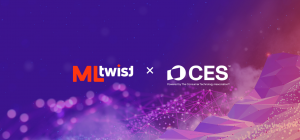30
Dec

A leading AI technology company developed a large language model (LLM) to work with a proprietary internal coding language created for mission-critical applications. The model needed to understand and generate code in this unique language, accurately interpreting natural language prompts and producing precise coding outputs.
To achieve this, the company required a high-quality, domain-specific training dataset — one that linked prompts with correct coding outputs and enabled the model to rank multiple outputs by accuracy and relevance. Because of the specialized nature of the coding language, the project demanded not only expert annotation but also rigorous quality control in sourcing and vetting coders before any labeling began.
The company faced several key hurdles:
Specialized Knowledge Requirement – The coding language was proprietary, with no existing external talent pool familiar with it, requiring targeted recruitment and testing of coders.
Prompt-to-Code Mapping – The LLM needed a dataset of prompts paired with correct coding outputs to learn accurate code generation.
Output Ranking for Accuracy – The model also needed to be trained to rank multiple candidate code outputs based on relevance and correctness for a given prompt.
Quality Assurance at Scale – Given the stakes of AI applications, annotation accuracy had to be extremely high, with minimal tolerance for errors.
Time and Cost Efficiency – The project needed to meet tight deadlines without compromising quality.
1. Sourcing and Testing Coders for Specialized Language
MLtwist designed a targeted recruitment and testing process to identify individuals capable of quickly learning and working with the proprietary coding language. By pre-screening and running skill assessments before annotation began, MLtwist ensured only the highest-quality coders worked on the project.
2. Prompt Generation for Code Training
MLtwist developed precise, contextually relevant prompts that matched the intended coding outputs. This structured prompt dataset formed the backbone of the LLM’s training, enabling the model to interpret natural language requests and produce valid code in the proprietary language.
3. Ranking Code Outputs by Quality and Relevance
MLtwist’s annotators evaluated and ranked multiple code outputs for each prompt, training the LLM to distinguish between optimal, partially correct, and incorrect responses. This step significantly improved the model’s ability to self-assess and refine its generated outputs.
4. Scalable Quality Control Processes
MLtwist implemented rigorous quality checks, including multi-level review and inter-annotator agreement scoring, to ensure each prompt-code pair met strict accuracy standards.
5. Time and Cost Savings
Through automation in workflow management and batch QA processes, MLtwist reduced annotation timelines by over 40%, allowing the AI tech company to accelerate model iteration without inflating costs.
Higher Model Accuracy – The LLM achieved improved precision in generating and ranking code outputs in the proprietary language.
Optimized Talent Pool – The pre-screening process ensured only top-performing coders contributed to the dataset.
Faster Model Development – Streamlined data preparation enabled quicker training cycles.
Reduced Costs – Automated processes and efficient resource allocation lowered annotation expenses.
Enhanced Reliability – The rigorous QA framework minimized errors in mission-critical AI applications.
Conclusion
By partnering with MLtwist, the AI tech company successfully trained a large language model capable of generating and ranking code in a proprietary, mission-critical language. From sourcing and testing coders to generating high-quality prompts and rankings, MLtwist’s advanced data preparation workflows ensured optimal accuracy, efficiency, and scalability. The result was a cutting-edge LLM ready to support the company’s high-stakes AI operations with unparalleled coding precision.
Subscribe us and get latest news and updates to your inbox directly.
January 6-9, 2026 / Las Vegas, NV

Meet us there : contact@mltwist.com
The Ultimate Guide to AI Data Pipelines: Learn how to Build, Maintain and Update your pipes for your unstructured data

